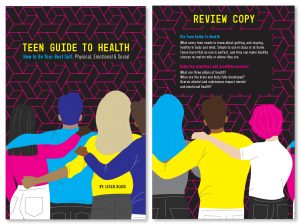Working From Home Is Difficult For Connections
Updated 2/21/25 Are you working from home? When the pandemic hit, our lives were changed forever. Now, three years later thousands of people are either working from home or in hybrid work environments. First, we stopped going to work because our workplaces closed in response to stay-at-home orders. Not meeting in person meant no chitchat, no birthdays celebrated, no meals shared and no in-person comradeship. Although our teams had more time for work, productivity did not always increase.
Are You Working From Home
I joined the remote workforce when my organization’s building was sold, but I knew what that was like from my years of authoring novels in my home office: the closet. Your days are your own. You work but you’re also contending with home life, like taking care of your kids and family members.
Working From Home To Returning to the Office
Why would people want to work in offices with time restrictions, daily commutes and supervisors who can see what they’re doing? That’s a rhetorical question. Why would anyone want to return to the old way of doing things? Getting dressed, commuting, sitting in endless meetings, going to meetings outside the office and commuting again to get home at a reasonable hour? It was exhausting. Forget family time. Frankly, most people weren’t appreciated and didn’t earn enough to make all those efforts worthwhile.
How To Get Employees Back To The Office
Getting people back to the office is now a hot topic . But how should businesses do it? Well outside of employee mandates (which might not be ideal), the gentle approach may be more effective. A lot of people are reluctant about going to the office for work mostly due to stress at the office. Consider these issues. Is there workplace culture? How is the workplace itself? Is it dull, dark, and cold? Does it allow for collaboration?
Better yet, does working in the office harm employee wellness or impact it positively? Oftentimes, employees don’t mind going to the office (maybe not daily of course), but if the environment doesn’t help them feel their best, and they feel their best at home, well, they’re going to want to work remotely, right?
So you could look into programs to change that such as workplace wellbeing programs, maybe offering healthy free options of food at the office, allowing in more natural lighting, keeping it at a comfortable temperature, and other positive perks. But of course, mental health is one of them, so you need to get rid of the toxicity in the workplace too.
Why People Are Still Working From Home
According to the WSJ, more than 200,000 businesses closed in the first year of the pandemic. When businesses shut their offices down, employees stopped commuting and a new normal set in. A new awareness grew about the value of many kinds of formerly unheralded professions, and many people began to question their current role, leading to the Great Resignation. Workers didn’t want to come back to their offices or quit their jobs altogether to find more fulfilling work. Remote working is still persisting, but how does it really affect us?
Are people honest about how hard they’re working on actual work? If our remote workforces are not engaged, we could lose days and weeks in productivity because it’s hard to get answers and even care when other people aren’t providing actual daily support.
What I’ve noticed is a certain lack of urgency in returning calls or emails. It can be hard to set meetings when your employees are busy with life, kids or family members and their needs. Worse, as an employer, I don’t hear about people’s troubles, triumphs, hopes and dreams anymore, because we’re not in the same room or even in the same state in many cases. As leaders, we need to cultivate better connections with work and with each other. Working remotely is just that — remote. It may be work, but it’s not always people- or human-friendly. As leaders, we need to make work human-friendly.
Working From Home and Rebuilding Connections
I miss people, and I know my team misses the community of being together, acknowledging achievements, having goals, sitting around the conference table and celebrating birthdays and milestones. But we can build new human-oriented resources to reconnect and improve employee satisfaction. It requires a little creativity and empathy, but we’ve got that, right?
We know that having friends at work really matters, but what if you’re not seeing your friends every day, or they are no longer with the organization? Here are five ways to help your employees feel included, needed and appreciated in a hybrid or remote working environment.
1. Get everyone tech-savvy and inform team members with updates about what’s going on in the company. This can be through emails, newsletters or group chat. At my company, we do weekly newsletters.
2. Have virtual water cooler meet-ups. You can set a weekly time and provide a subject for discussion — or not. We’re a wellness organization, so we like to suggest that businesses provide a safe space to discuss mental and emotional health. Having programs your workforce can opt into can help your employees if they’re struggling. Meet-ups will allow new employees to get to know team members in a relaxed setting, and employees who know each other can check in and stay connected.
3. Acknowledge achievements and milestones of both the teams and individual employees. Do this on a regular basis. Here again, being tech-savvy is crucial. You can acknowledge achievements in the office with cookies, but in a remote setting, ensure there is a virtual option. Feeling appreciated is very important for employees’ satisfaction.
4. Have a party. Yes, get together again either in person or virtually — whatever works best for your organization. At my company, we love picnics and bake-offs and getting together. Your company can do something together this spring and summer — consider celebrating the 4th of July, Memorial Day or Labor Day. The options are truly endless: Have a sing-along, go to a game or have a trivia contest. Whatever your employees love to do, do it together.
5. Engage in charity work. This is my favorite way to engage others and do good. Get your employees involved with a cause they can support together and volunteer. Be part of a local food drive. Help veterans or people who are homeless. It doesn’t matter what the charity is, giving and volunteering together can bring unity and pride to your company.
While remote working and working from home may have forced us to change the playbook, that doesn’t mean our connections are lost forever. You just need to rebuild connections in any way you can. You can hear the audio here
More Articles Articles To Read
How Business Can Become Recovery Friendly
Family Addiction In The Workplace
Life Is Back! Don’t Forget Self Care
Best Self Care Tips For Brain Health In 2025





















